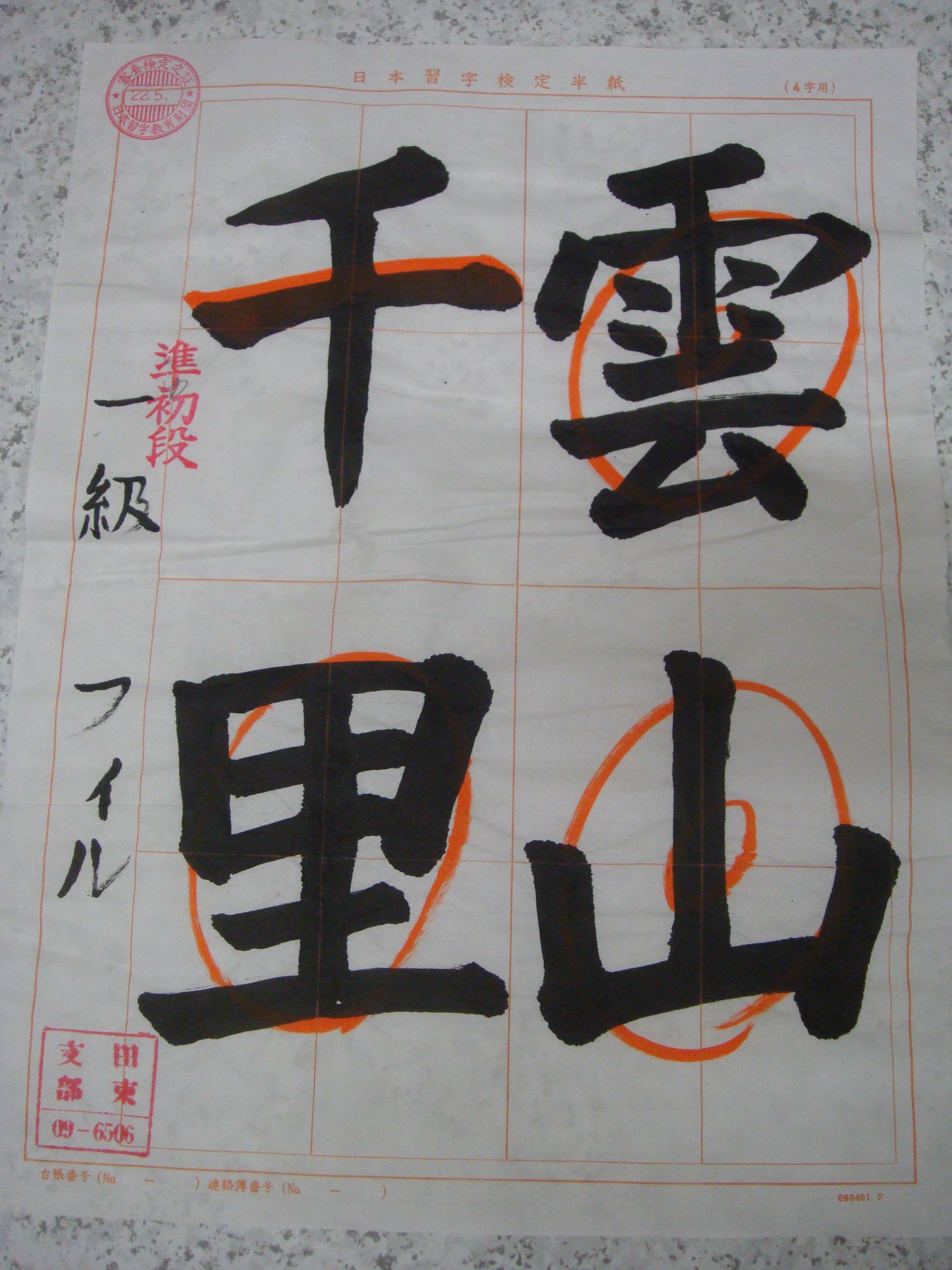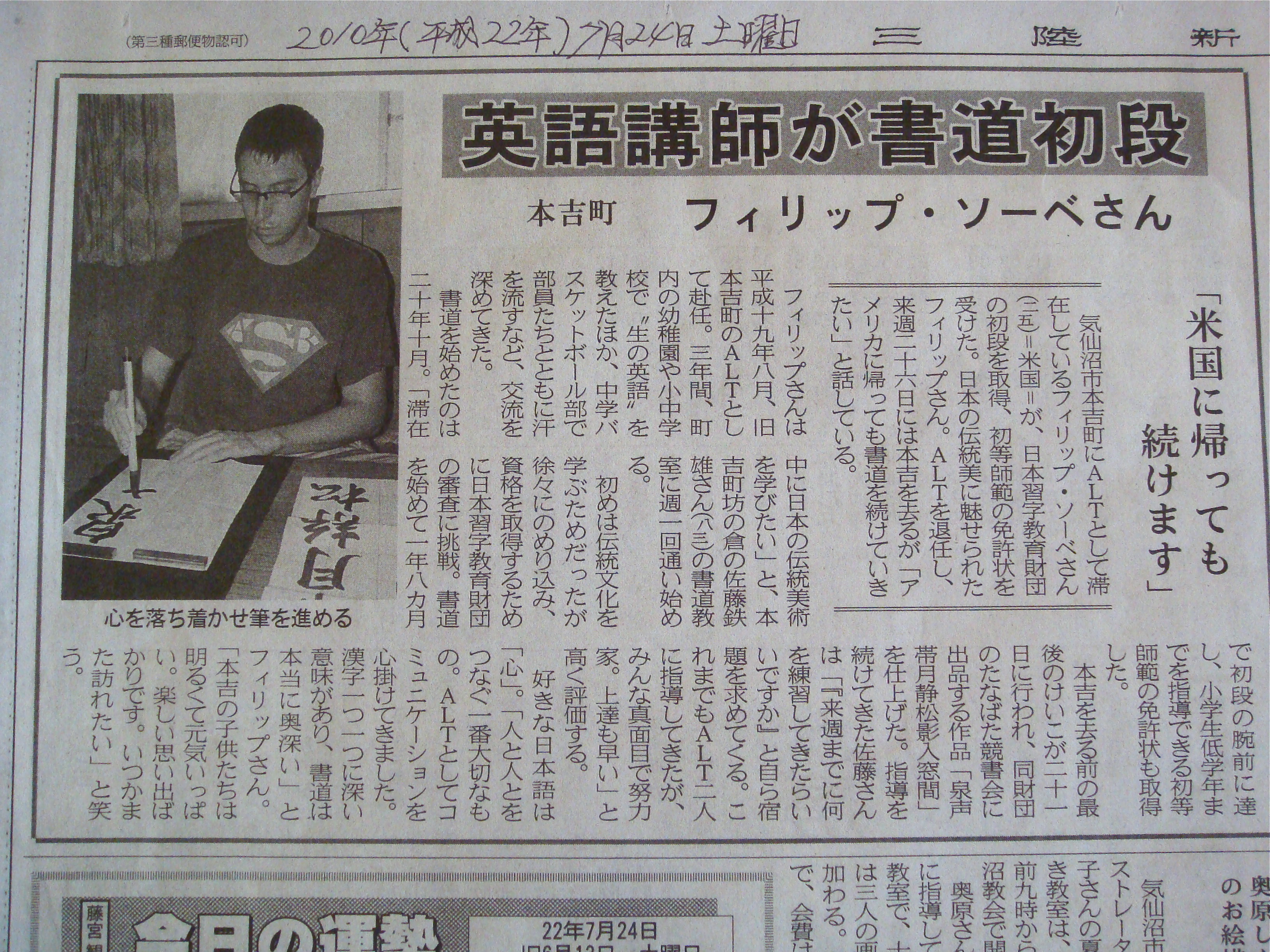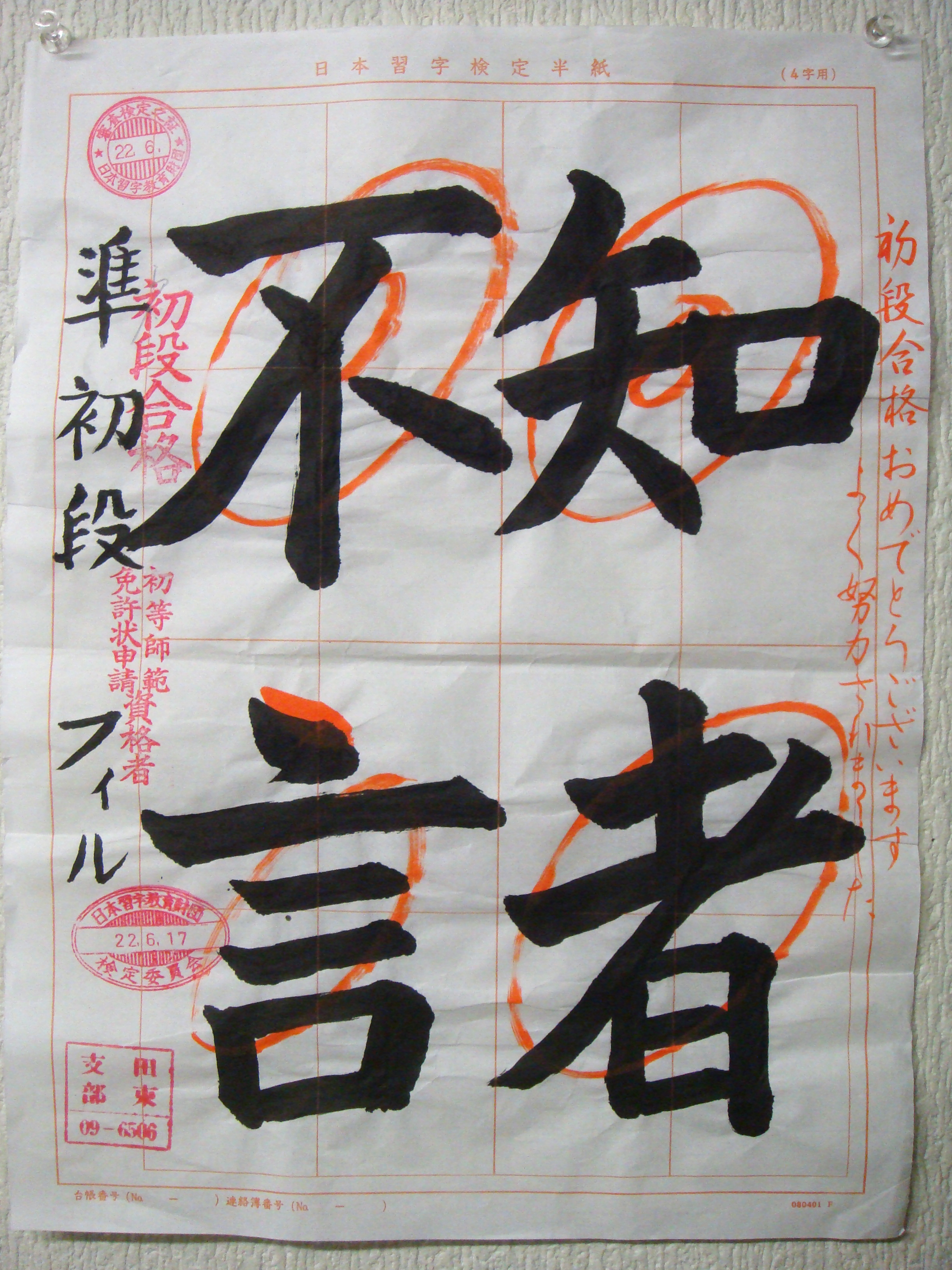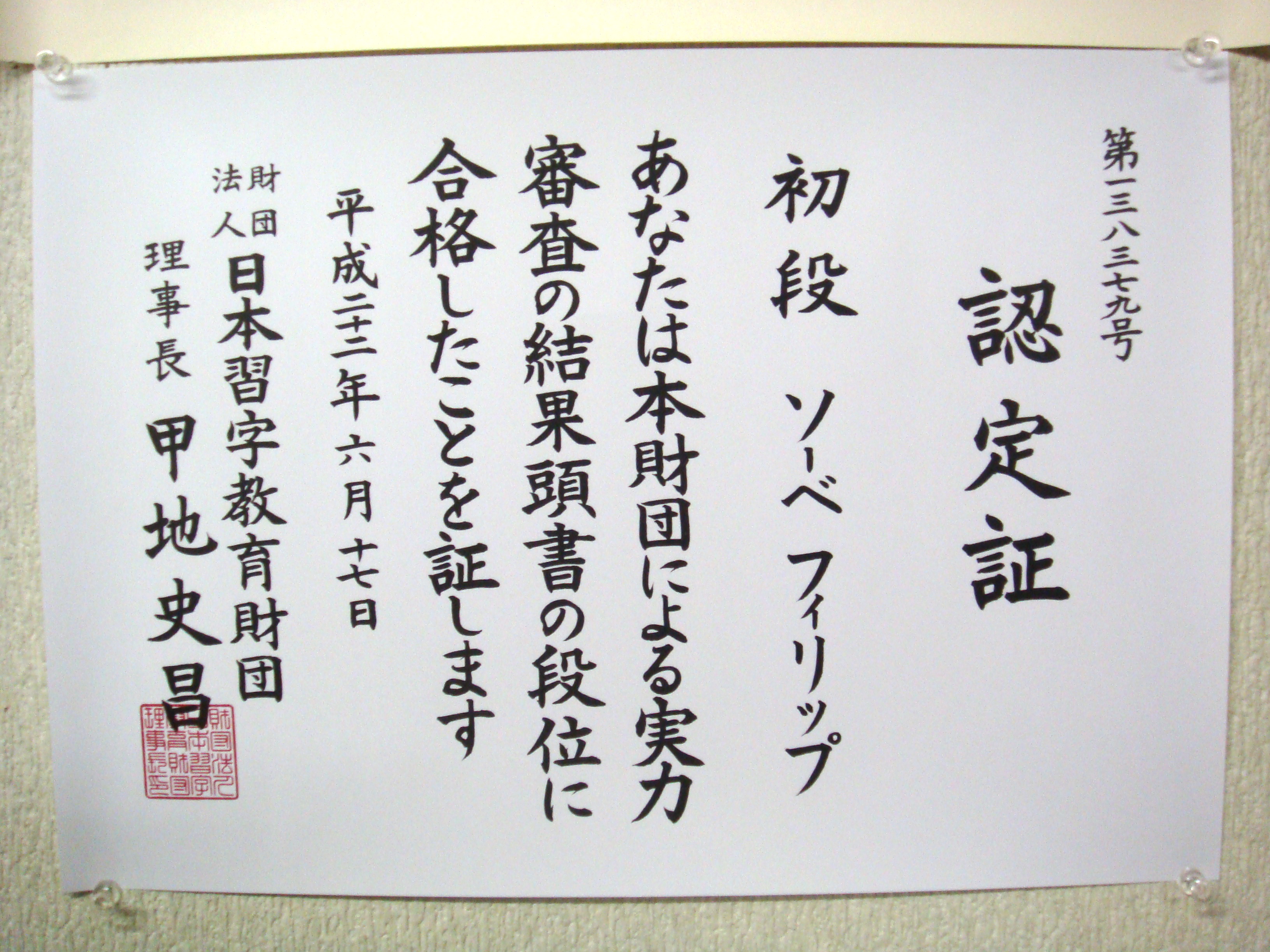
"The tall, cloud-covered mountains stretch out far into the distance"
What is 習字 (shuji)?
Shuji (Japanese calligraphy) is the skillful writing of kanji characters in a way that gives them balance and expression. It is not just writing a character on a piece of paper though. It is much more than that. Each stroke has a a proper way to begin and end and there is a correct order and path to follow. It takes lots of time and practice to master, and it’s essential to focus. The slightest lapse in concentration will show in one’s work.
Calligraphy was introduced in Japan around 600 AD, but dates back to the BC era in China. It is now a required subject in elementary and junior high school in Japan, as part of the Japanese language curriculum. In high school it is offered as an art course. It can be difficult for the untrained eye to appreciate the delicate curves of each stroke or the intricacies and subtle beauty of the perfect stop, both of which contribute to the proper balance of each character.
The following are the few items needed to practice shuji:
- calligraphy brush (筆, fude)
- calligraphy ink, available already in liquid form or as a stick (墨, sumi)
- inkstone, to grind the ink stick on (硯, suzuri)
- Japanese washi paper, not rice paper (和紙, washi)
- felt mat (下敷, shitajiki)
- paperweight (文鎮, bunchin)
There are three styles to Japanese calligraphy writing: block printed style (楷書, kaisho), semi-cursive style (行書, gyosho), and cursive style (草書, sosho). All learners of shuji begin with the block printed style and work their way up toward the more difficult styles.
What I’ve Been Doing
I wanted to learn one of Japan’s traditional art forms while I was here, and shuji seemed like the perfect fit. I’ve always had an interest in the arts (it runs in the family), but I’ve never had the patience or time to fully develop this interest. Shuji combines my interests in Japan along with fine art excellently.
Since November of 2008 I have been studying shuji from one of my neighbors, a level 8 shuji master (the highest rank), Continue reading →





